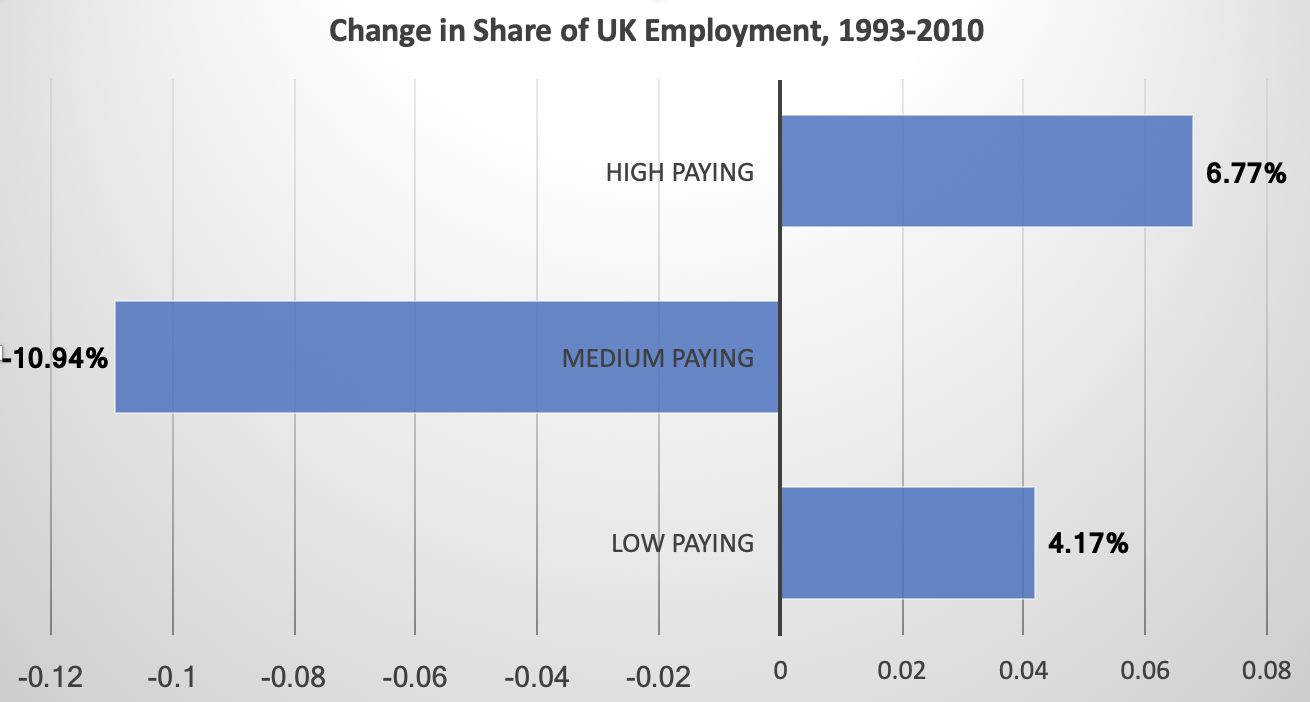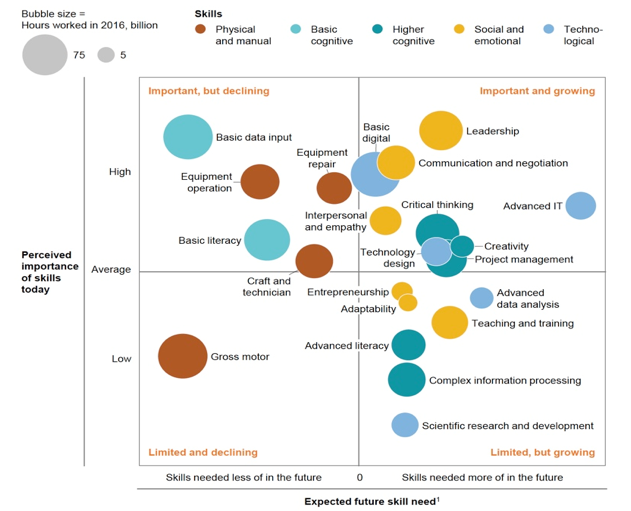Workforce planning – sustaining the operational skills needed in manufacturing

Background
Following reports of record employment levels across the UK, it’s a good time to reflect on how well-placed we are to sustain this and supply the skills and workforce required moving forward. These requirements will continue to evolve with the deployment of new technologies and automation, and the ambition of the UK industrial strategy to create more productive or “better” jobs will also demand new and higher level skills. All this will have implications for the skills required at all levels across all sectors, but in this post we consider the implications for entry-level semi-skilled roles in the advanced manufacturing sector. Automation will inevitably eliminate some routine manufacturing tasks, as it always has, but it will also drive a demand for different and higher-level core skills in these roles. Failure to supply a local workforce with the required skills could result in continued polarization of the job-market – “better” jobs may be beyond the reach of many local people, and low-paid or low-quality work will be the only alternative to unemployment. This requires a number of systemic challenges to be addressed, through integrated workforce planning which should form part of any local industrial strategy.

Source: Goos, Manning and Salomons (2014, table 2)
Future Requirements
A McKinsey survey of business executives, suggests that communication skills and critical thinking, along with basic digital skills, will be among those skills which will grow in importance to their businesses. The need to interpret information and data, and use them to make decisions, are not new skills for manufacturing operators, and many businesses have assessed verbal and numerical reasoning as part of their operator selection processes for more than 30 years – but their importance will increase as Industry 4.0 rapidly digitalises our workplaces.
Employers, schools, colleges, and local government agencies will all have a part to play in ensuring the skills are available in the places they are needed, and that local people can access these jobs. Some of the key challenges that should be addressed are outlined below.
 McKinsey Global Institute Workforce Skills – Executive Survey, March 2018
McKinsey Global Institute Workforce Skills – Executive Survey, March 2018
Raising attainment levels in education, particularly for disadvantaged young people
Providing young people with a platform of information processing skills through education will only become more important. Around 40% of young people currently fail to pass both GCSE Maths and English at 16, and this number increases to 64% for the 1 in 7 children who qualify for Free School Meals. The policy of continuing to re-sit these subjects post-16 is well intentioned but isn’t adequately addressing this challenge – 5 years after the completion of Key Stage 4 around 20% of each annual cohort will have still failed to achieve a Level 2 equivalent qualification. Attainment levels among disadvantaged students clearly reflects a number of complex and interdependent social issues, but it is an important challenge for those cities or regions with ambitions to improve the local economy by attracting high-value and higher skilled work. A recent study suggests that nearly 45 per cent of people in the UK will only ever work in the place where they were born, so the local education system needs to deliver improved outcomes consistent with the qualifications required by local economy.
Employers providing high quality training
Employers clearly have a key role to play in training new and existing employees. From our work with the automotive sector in the North East we’ve seen excellent examples of businesses providing high-quality training to new and existing employees through Intermediate Level 2 apprenticeships. These programmes provide employees with valuable and transferable skills, and contribute to a more resilient and flexible local job market. They also provide a stronger employment proposition than the agency or temporary contract entry-routes that can often be the norm for roles at this level. This type of training is, however, in decline, and the number of Intermediate apprenticeship starts has halved since 2012, as many levy-paying businesses have prioritised using their levy to fund higher-level apprenticeships for existing employees. Although higher-level training for existing staff is important, it should not be at the expense of training new entry-level employees. This is just one of the consequences of the apprenticeship levy which should be resolved if policy and funding is to support the needs of industry and the broader needs of a local economy.
Providing core skills to those re-entering the job market
The dynamics of the job market will require redeployment from redundant activities, or from declining sectors or businesses. Although short Sector Based Work Academy programmes can be effective in preparing job-seekers for employment opportunities in manufacturing, there would be benefit in broader availability of basic digital and information processing skills. Recent analysis from Mercer suggests that those workers affected by automation will include a high proportion of older workers, but ideally this type of training would be generally available to adults, rather than a reactive intervention at the point they are facing redundancy. Further Education Colleges often provide this training, and it will be important that this continues to be accessible, funded, and in line with industry requirements.
More inclusive workplaces
In a tight labour market, where supply could be further constrained by lower migration from the EU, drawing on the broadest available pool of workers through inclusive attraction, recruitment and employment practices will be important. In some parts of manufacturing, where the workforce continues to be predominantly male, this will include improving access to females, particularly from other sectors, such as retail, which have traditionally had higher female representation.
An integrated workforce plan
All these challenges are complex and not easily resolved, but an integrated workforce plan that focusses on a long-term place-based approach to aligning workforce supply and demand, will help prioritise actions and resources in support of required outcomes. Different cities and regions will have different legacies, challenges, and requirements, so actions will need to be tailored to that local context as part of a strategic workforce plan that effectively engages employers, education providers, and local government agencies.

Recent Comments